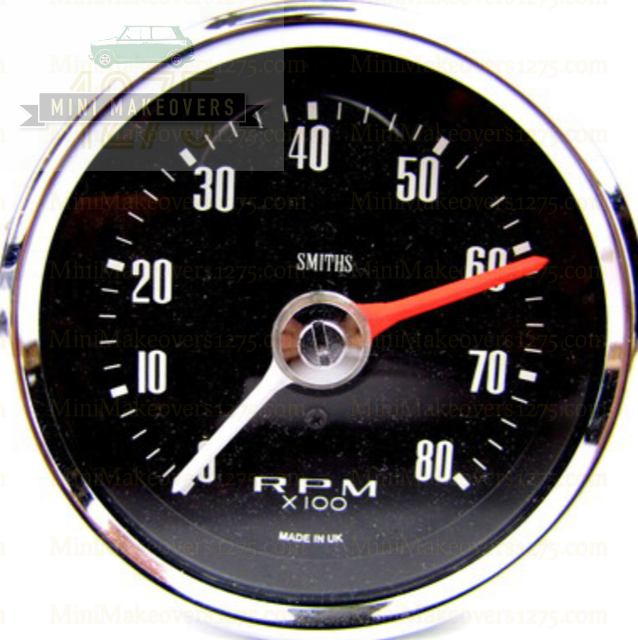How a Tachometer Assists Display Engine Health And Wellness and Performance
How a Tachometer Assists Display Engine Health And Wellness and Performance
Blog Article
Opening the Tricks of Tachometers: Every Little Thing You Need to Understand About This Vital Instrument in Your Lorry
Comprehending the complexities of tachometers can offer useful insights right into your automobile's efficiency and upkeep needs. From gauging engine rate to deciphering the information it offers, tachometers act as a vital tool for car proprietors and enthusiasts alike. By deciphering the mysteries behind this vital tool, you can open a wealth of details that can improve your driving experience and guarantee the long life of your vehicle.
Value of Tachometers
The relevance of tachometers depends on their ability to offer crucial real-time data regarding an engine's rotational speed, enabling for specific surveillance and maintenance of equipment. By measuring the changes per minute (RPM) of an engine's crankshaft, tachometers provide useful understandings right into the engine's performance - tachometer. This data is essential for making certain that the engine operates within its optimum array, preventing potential damages from over-revving or underperforming
Tachometers play an important duty in assisting drivers and professionals discover any abnormalities in the engine's rate, which might indicate problems such as fuel inadequacy, mechanical issues, or too much stress on the engine. By without delay determining these problems with tachometer readings, upkeep can be carried out proactively, stopping costly repair services and downtime over time.
In addition, tachometers are particularly important in high-performance lorries and machinery, where exact control over engine speed is needed for ideal procedure. Racing cars, airplane, and industrial equipment rely on tachometers to provide peak efficiency while preserving safety and security criteria. In essence, tachometers are not simply tools for gauging speed however indispensable tools for making certain the smooth and effective procedure of engines across various applications.
How Tachometers Action Engine Speed
Using sensors that spot the frequency of electrical pulses generated by the engine's ignition system, tachometers accurately measure the rotational rate of an engine. By keeping track of the rate at which these pulses are received, tachometers offer real-time comments on just how fast the engine's crankshaft is rotating per minute, commonly referred to as revolutions per minute (RPM)
The tachometer's sensing unit, commonly connected to the engine's ignition coil or ignition system wires, chooses up the electrical signals generated each time a cylinder fires. These signals are after that transformed into RPM readings presented on the gauge or instrument collection within the driver's view. Tachometers can be analog or digital, with modern-day vehicles typically including electronic screens for specific and instant RPM readings.
This info is vital for drivers to recognize the engine's performance, protect against over-revving, additional info maximize gear changing, and make certain effective gas intake. By accurately determining engine speed, tachometers play an important role in assisting chauffeurs run their automobiles securely and efficiently.
Analyzing Tachometer Analyses
Having a clear understanding of exactly how tachometers gauge engine speed establishes the structure for effectively interpreting the RPM readings showed. Interpreting tachometer readings is essential for ideal vehicle efficiency and engine health. When the engine is idling, the tachometer needle commonly rests around 600-1000 RPM, depending on the vehicle.


Tips for Utilizing Tachometers Successfully
To enhance driving effectiveness and maximize engine performance, what secret techniques can be carried out for efficiently making use of tachometers? Tachometers are critical tools that supply real-time comments on engine speed, making it possible for drivers to make informed decisions for better efficiency - tachometer. Below are some tips for using tachometers properly:
Understanding Optimal RPM Array: Acquaint on your own with the optimal RPM (Changes Per Min) array for your automobile. This range ranges various automobiles and is normally suggested in the proprietor's guidebook. Keeping the engine within this range can boost gas effectiveness and lengthen the engine's life expectancy.
Shifting Equipments at the Right Time: Make use of the tachometer to figure out the best time to change gears. Aim to change gears when the click over here RPM gets to the optimal range for the next equipment.
Keeping Track Of Engine Stress: High RPMs for long term periods can stress the engine. Keep an eye on the tachometer to stop over-revving, specifically throughout velocity or when lugging heavy loads.
Tachometers and Car Upkeep
When taking into consideration automobile maintenance, tachometers play a critical role in keeping track of engine performance and spotting prospective problems. Tachometers provide necessary information on engine rate, enabling motorists and auto mechanics to make certain that the engine is running within the recommended RPM range.
In addition to spotting Recommended Site potential problems, tachometers can also aid in maximizing fuel effectiveness. By maintaining the engine speed within the optimal variety, chauffeurs can boost their gas mileage and minimize fuel intake. This not just profits the vehicle driver's pocketbook however also adds to environmental conservation by reducing unsafe discharges.
Verdict

Report this page